Overview
Featuring a 1/2.9”-type sensor, 12Mp resolution and a f/2 lens, the Meizu Pro 6s produces pleasing photos in all lighting conditions, with generally good exposures and vibrant color rendition. It delivers outstanding detail, too, particularly in bright light conditions, where it rivals some of the top-performing devices we’ve tested, such as the Samsung S7 Edge. In low light, detail preservation is also very good, as the Meizu Pro 6s strikes a nice compromise between texture and noise for both photo and video results. Using flash with additional ambient light sources, photos are excellent, with accurate exposures, pleasant color rendering, and great detail. The main drawback we encountered, however, is very noticeable flare on backlit photos and videos when shooting towards bright light, which detracts from the overall good picture quality.
Outdoor Images: Great detail
Shooting outdoors, or in bright light conditions, the Meizu Pro 6s delivers good target exposures, with wide dynamic range, in the majority of photos. In some HDR exposures of tricky high-contrast scenes, however, the device tends to slightly underexpose the image, resulting in a loss of some detail in darker areas.
How much of a drawback you consider this to be will reflect your personal preferences, as an exposure strategy that retains highlight details in very high-contrast scenes means that photographers prepared to do a little post-production enhancement can often adequately lighten the darker tonal regions for a better overall exposure.
Even without such post-production editing, however, the vast majority of outdoor exposures remain very acceptable for most users. The Meizu Pro 6s’s greatest strength is its excellent detail preservation when shooting outdoors, with the 12Mp sensor recording exceptional fine detail. The issue of heavy flare when shooting towards a bright light source can seriously detract from the overall quality of outdoor pictures, however. We shot many unaffected exposures with the sun coming in from the side or rear, but with strong light coming directly into the lens, very noticeable streaks of colored flare are a real concern.
Indoor Images: Good balance between texture and noise
The Meizu Pro 6s’s low-light photos offer good target exposure, with wide dynamic range, in what can often be challenging conditions for smartphone cameras. The combination of the f/2 lens, aided by a 4-axis Optical Image Stabilization (OIS) system, ensures good results even in extreme low light (5 lux), with images offering a very useable exposure, with more than acceptable texture and detail. Meizu has adopted a similar compromise on the Pro 6s for low-light photography as we’ve seen on other recent devices, such as the Huawei Mate 9, striking a good balance between fine detail preservation and low levels of luminance noise. The main drawback we encountered in low light was color rendering, however, with a slight pink colorcast visible, as well as some noticeable color shading, shifting from pink tones in the center to green at the edges.
Video: Effective stabilization and autofocus
The Meizu Pro 6s’s video module records generally good exposures in all lighting conditions. Exposure adaption is also fast when changing between bright and low-light conditions, although some visible steps in adaption are noticeable. Video color is, on the whole, very good, with accurate white balance and bold color rendering, particularly in bright light. A slight shift in the color matrix is often noticeable during convergence between bright and dark scenes, but it’s not too distracting.
The main color drawback on the Meizu Pro 6s’s video files is again that color shading issue that we saw with stills, with visible shading in bright light conditions, as well as under-saturated color in low light. The stabilization system is effective for video, and aside from some jello and jitter effects visible with walking motion, videos are fairly stable. Autofocus is also very good, generally keeping subjects locked on during capture, with just the occasional overshoot apparent when shooting video in bright light. Texture preservation remains good in bright light videos, with only a slight loss of fine detail in low light. That heavy flare problem again raises its head when shooting backlit videos towards the sun, however, and should be avoided on the Meizu Pro 6s where possible.
Details: Explaining the score
Exposure and Contrast (88)
The Meizu Pro 6s achieved a very good score here, thanks to many excellent exposures in all lighting conditions, including extreme low light (5 lux). It lost some points due to slightly underexposed HDR images, but even here the results were acceptable.
Color (82)
The Meizu Pro 6s recorded a good score for color, with bold, vivid, and pleasant hues in most lighting conditions and especially in bright light. Some undersaturated color in extreme low light, with visible color shading, and a noticeable blue colorcast in some outdoor pictures reduced the score a little, but on the whole, a solid result.
Autofocus (91)
Featuring a phase detection and laser system, the Meizu Pro 6s achieves its joint highest category score for autofocus. In bright light it’s very fast, and although slower in low light, overall autofocus is fairly accurate and repeatable. It recorded some instabilities and failures in both preview and touch-to-focus mode, with some visible steps in convergence in preview mode, but they were fairly rare, and on the whole, autofocus performance was excellent.
Texture (91)
Noise (87)
The Meizu Pro 6s achieves excellent scores for both texture and noise in all lighting conditions. In bright light, detail is outstanding and stands up to comparisons with some of the best devices we’ve tested, including the Samsung S7 Edge. In low light, the texture score is lower, with the loss of some very fine detail and an increase in luminance noise (as you might expect), but it remains very respectable and provides a good balance between texture and noise.
Artifacts (78)
Some noticeable artifacts, or optical deficiencies, are the primary drawback on the Meizu Pro 6s, resulting in one of its lowest category scores. The strong visible flare in backlit images can seriously detract from the quality of images shot towards bright light. Other issues, including visible ringing, moiré on high-frequency patterns, and a slight loss of sharpness between the edges and center of the frame are also noticeable on 100% crops, but these are less problematic overall compared to the flare.
Flash (85)
Offering a 10-LED flash module, the Meizu Pro 6s records good flash exposures and achieves a solid score. In flash-only pictures, heavy fall-off results in noticeably darker corners, but when mixing flash with additional ambient light sources (as is often the case), target exposures are good, with less noticeable fall-off. When mixing flash with tungsten light sources, white balance remains pleasant in most shots, but we observed some inconsistencies in colorcast over repeated consecutive exposures.
Photo Pros
- Good detail preservation, particularly when shooting in bright light.
- Generally accurate and repeatable autofocus.
- Good target exposure and dynamic range in all lighting conditions.
- Vivid and pleasant color when shooting in bright light.
- Good flash exposure, color, and detail preservation.
Video Pros
- Good stabilization, especially when shooting outdoors.
- Generally good white balance and overall exposure.
- Generally good autofocus.
- Good texture preservation in bright light.
Photo Cons
- Strong flare in backlit pictures.
- White balance has a visible blue colorcast when shooting outdoors.
- In low-light conditions, luminance noise is noticeable.
- Visible flash fall-off, with dark corners in flash-only pictures.
Video Cons
- Color shading visible in bright and low light conditions.
- Strong flare often visible when shooting outdoors.
- Undersaturated colors and loss of detail in low light.
- Jello and jitter effects visible in walking scenes.


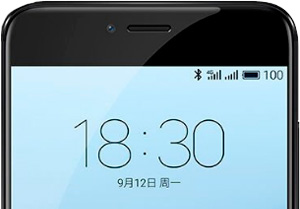


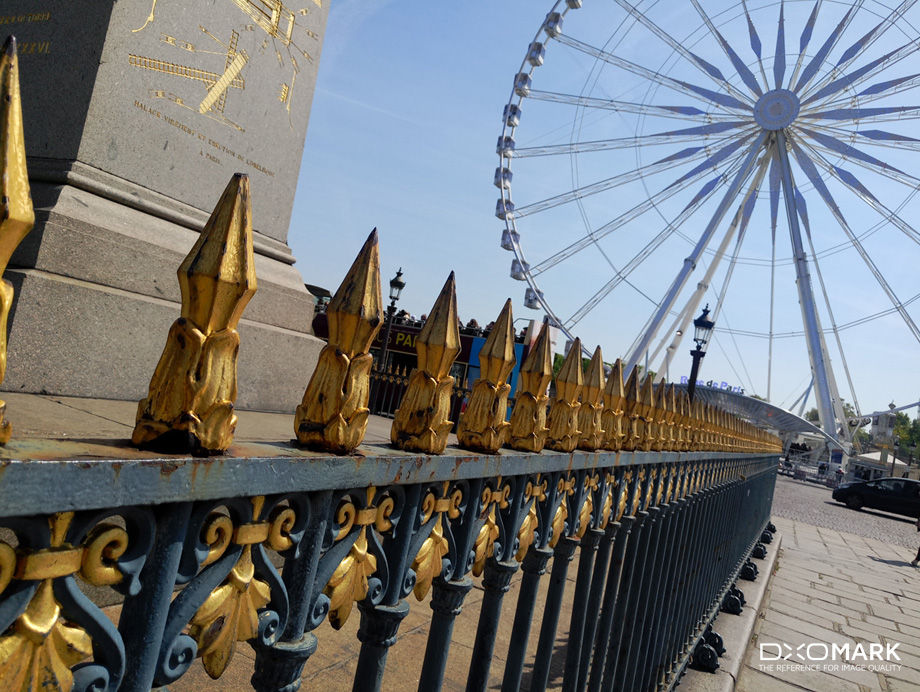
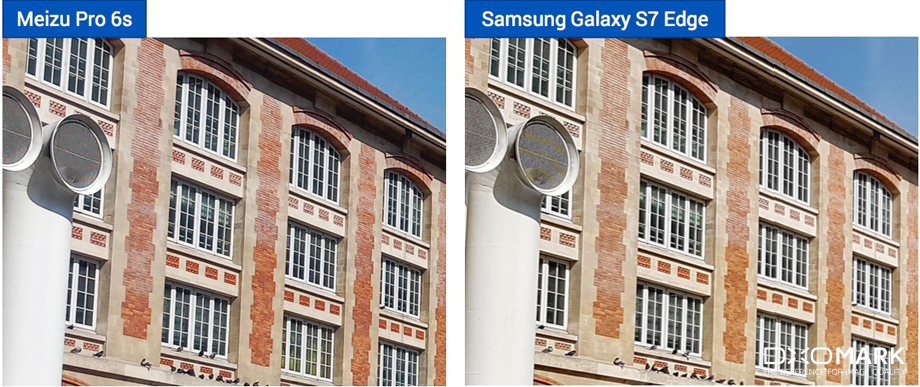
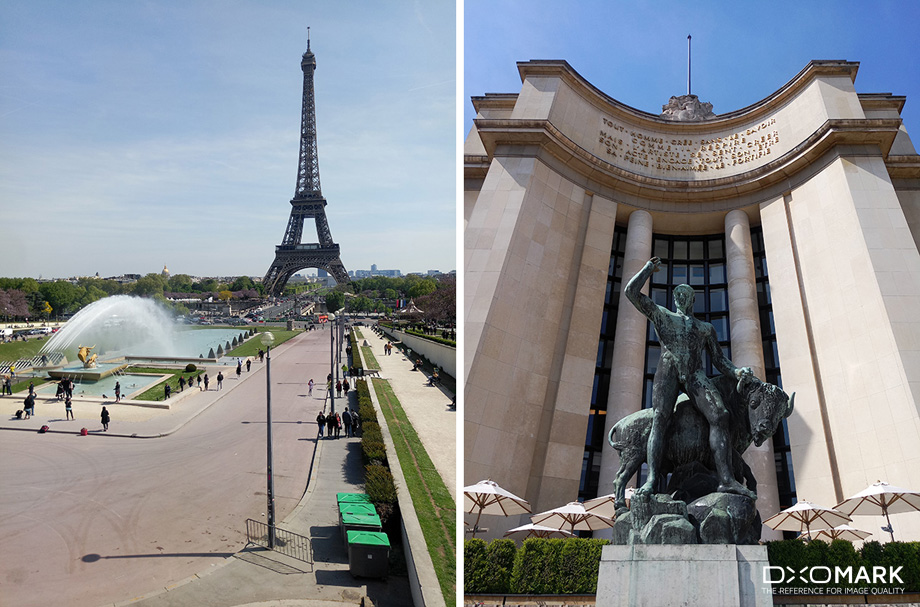

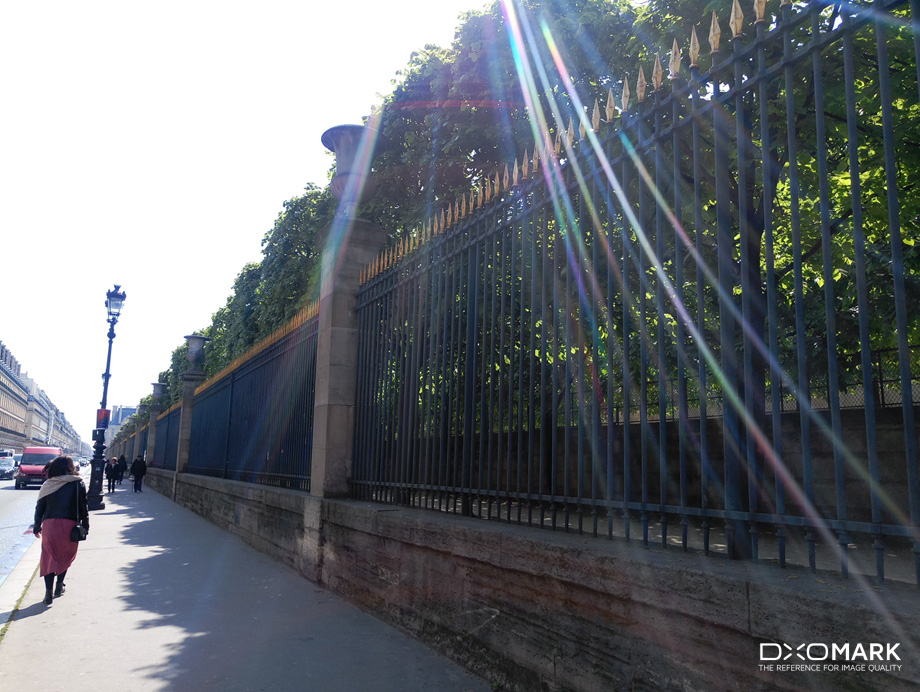

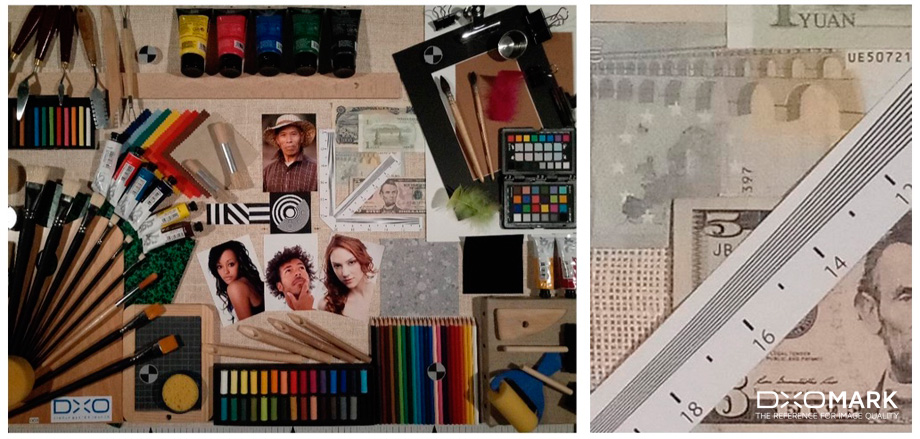
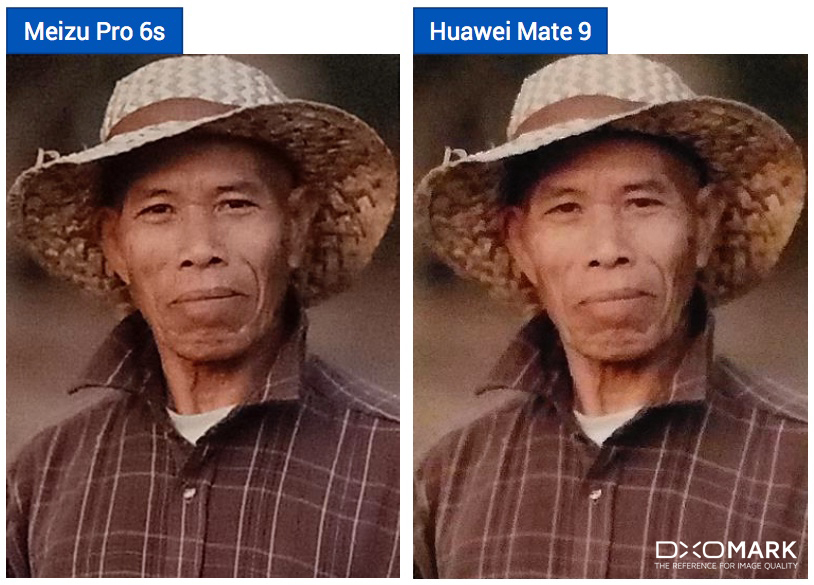


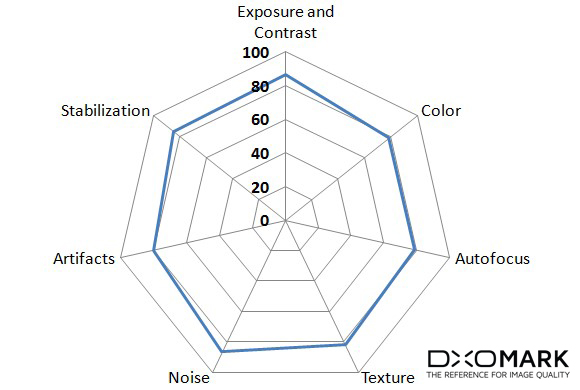
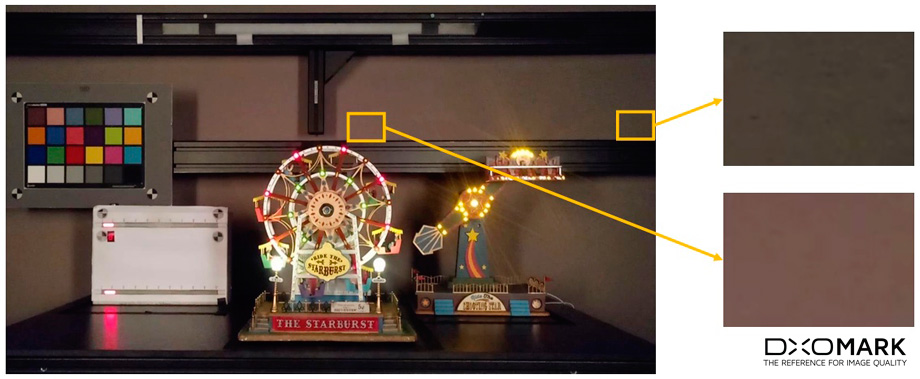
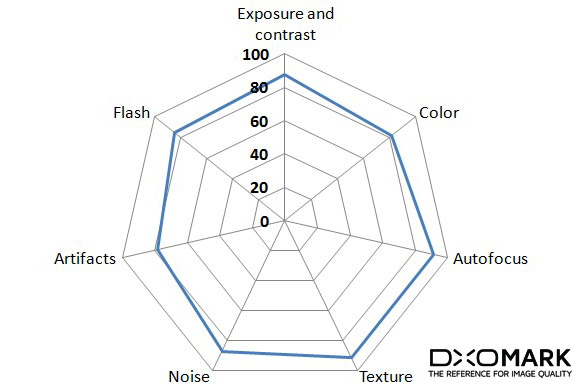
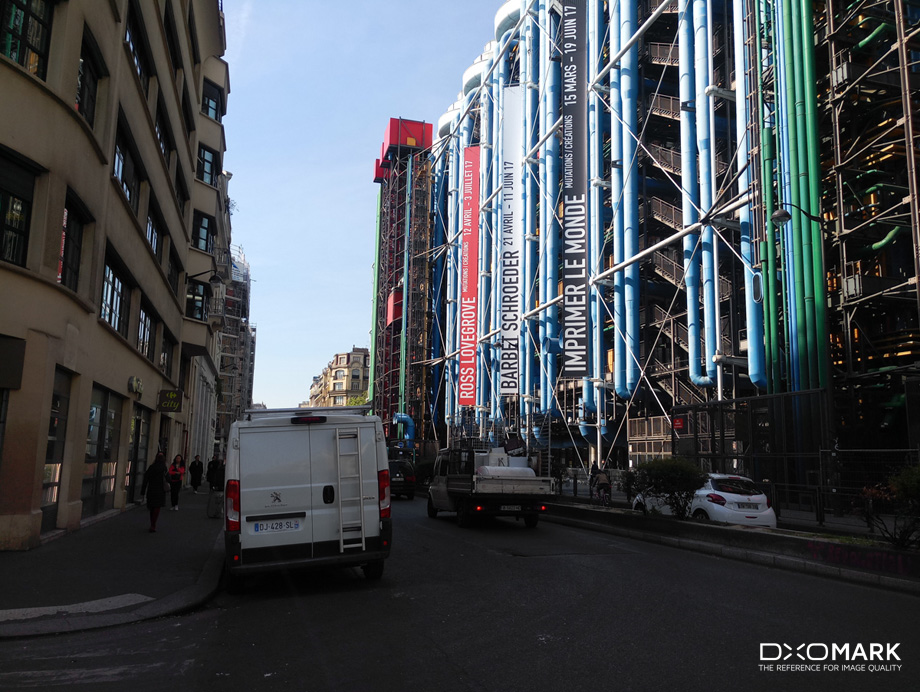

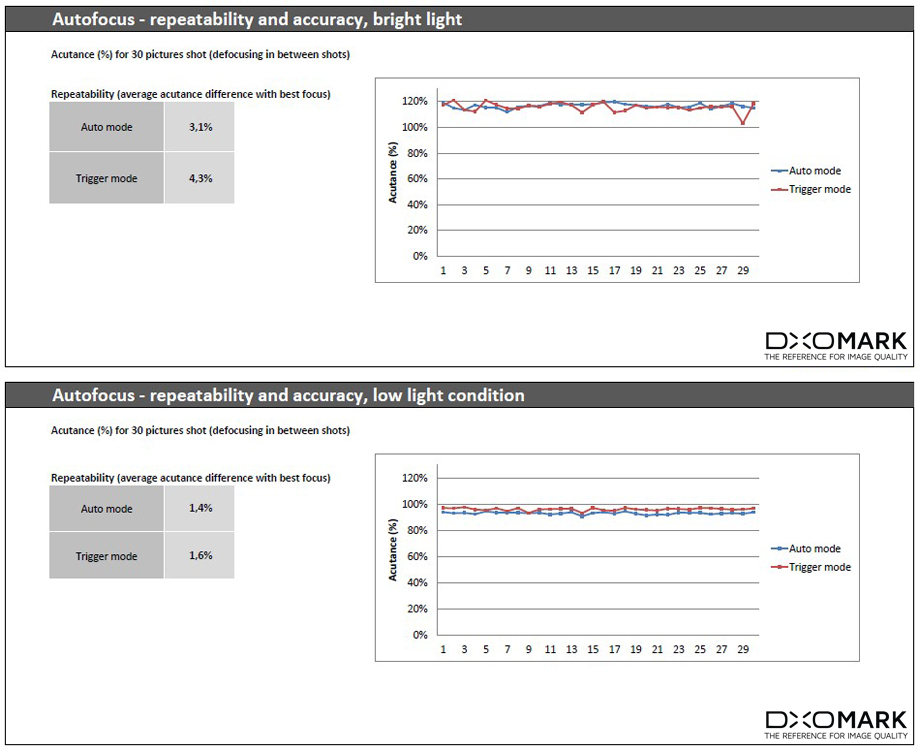


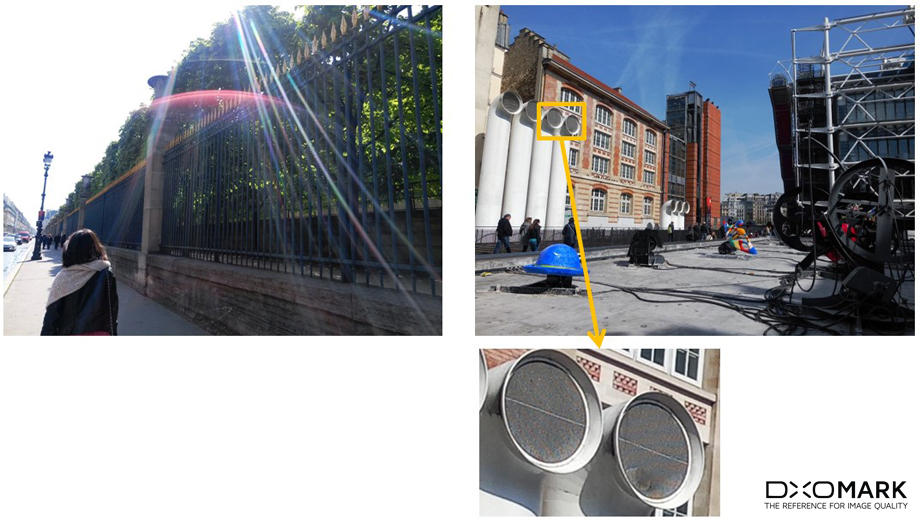
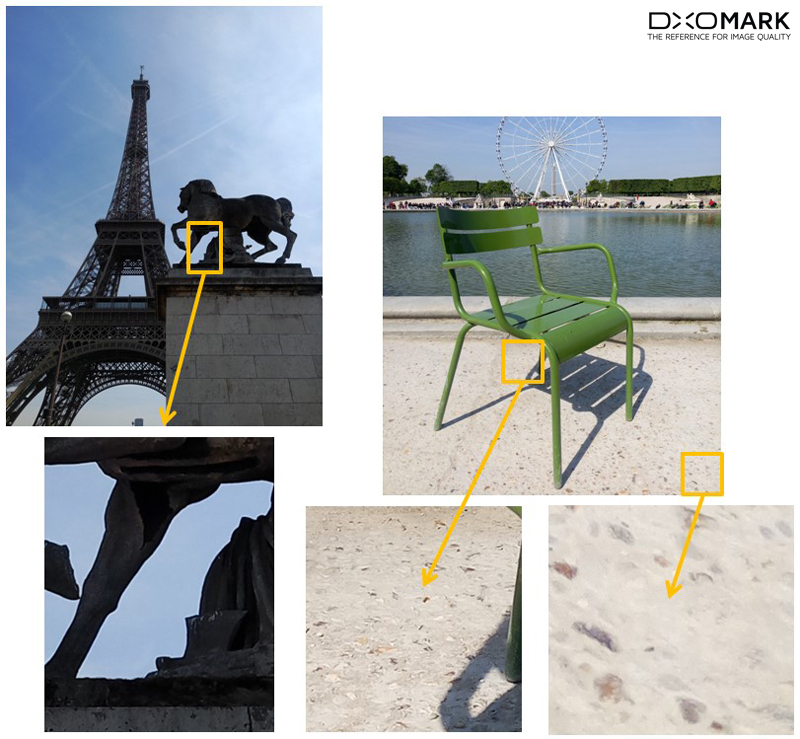
DXOMARK encourages its readers to share comments on the articles. To read or post comments, Disqus cookies are required. Change your Cookies Preferences and read more about our Comment Policy.